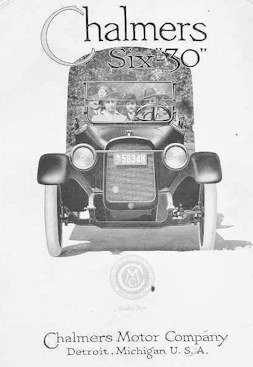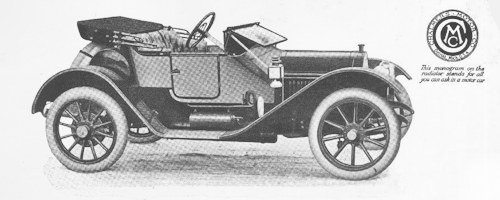Chalmers Motor Car Company History

The Chalmers Motor Car Company, was an American automaker that was based in Detroit USA from 1908 to 1924.
History
The Chalmers Motor Car Company, previously the Chalmers-Detroit Motor Car Company, was founded by Thomas-Detroit. Hugh Chalmers, the vice president of NCR Corporation at the time, purchased the company in 1908 and renamed it Chalmers-Detroit Motor Car Company. In the same year, the first Chalmers-Detroit automobiles arrived, which were essentially reissues of the previous Thomas Detroit.
At the end of 1910 Chalmers rebranded his company in Chalmers Motor Car Company and the cars were called Chalmers in the future, The output had expanded to roughly 20,000 copies per year. A Chalmers also won the Glidden Tour in 1910, the most important roadworthiness test for automobiles in the United States at the time.With their 2921 mm wheelbase and the 34 "wheels the Chalmers were very expensive cars at the time. The 30 Touring and the 30 Roadster cost $1500 USD.

As a result of the First World War in 1921 Chalmers rented part of his company building to the Maxwell Motor Company, in 1922 the merger took place. Maxwell bought the buildings and land from Chalmers for $ 1,987,000 and took over the company's debts. The new man at the head of Maxwell-Chalmers was Walter P. Chrysler. At the end of 1923 Chalmers had to stop production, and a year later Maxwell appeared now the first Chrysler.

Technical
-
Chalmers Motor Car Company models (1908-1924)
model
Construction period
cylinder
power
wheelbase
F
1908
4 row
24 bhp (17.6 kW)
2794 mm
e
1908
4 row
40 bhp (29 kW)
2845 mm
30
1909-1911
4 row
30 bhp (22 kW)
2794-2921 mm
40
1909-1911
4 row
40 bhp (29 kW)
2845-3099 mm
30-9 / 30-11 / 30-16
1912-1913
4 row
30 bhp (22 kW)
2921 mm
36-10 / 36-17
1912-1913
4 row
36 bhp (26.5 kW)
2921-2997 mm
Six-12 / Six-18
1912-1913
6 row
54 bhp (40 kW)
3302 mm
19
1914
4 row
36 bhp (26.5 kW)
2997 mm
24
1914
6 row
60 bhp (44 kW)
3353 mm
Light Six
1915
6 row
48 bhp (35 kW)
3200 mm
Master Six
1915
6 row
60 bhp (44 kW)
3353 mm
6-30
1916-1919
6 row
30 bhp (22 kW)
2921-3099 mm
6-40
1916
6 row
40 bhp (29 kW)
3150 mm
6-48
1916
6 row
48 bhp (35 kW)
3200 mm
6-54
1916
6 row
54 bhp (40 kW)
3353 mm
35-C
1920-1921
6 row
45 bhp (33 kW)
2972 mm
35-B
1920-1921
6 row
45 bhp (33 kW)
3099 mm
Six
1922-1923
6 row
45 bhp (33 kW)
2972 mm
Y
1924
6 row
45 bhp (33 kW)
2972 mm
